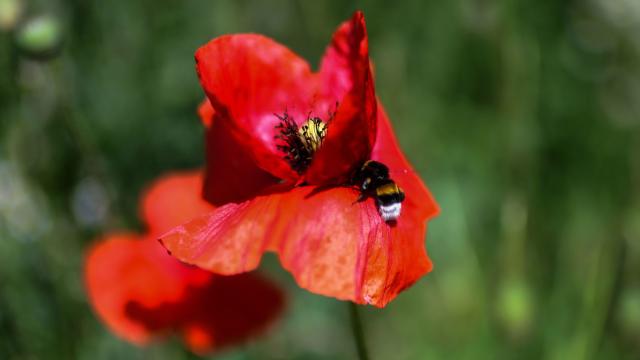It’s been a bad year for bees. According to the preliminary results of the University of Maryland’s annual survey, U.S. beekeepers lost 43.7% of their honey bees from April 2019 to April 2020. That’s the second highest rate of decline the researchers’ have observed since they started the survey in 2006.
Striking summertime losses drove this high annual rate of loss. Generally, more bees die off in winter due to low temperatures and a lack of food, but this past year, winter losses were actually pretty low at 22.2% ” that’s 6.4% lower than the survey’s average. By contrast, summer losses were the highest the researchers have seen in their 14 years of surveying. Beekeepers lost 32% of their bees in the summer, which is 10.4% higher than average. The annual survey is part of the Bee Informed Partnership and included 3,377 beekeepers managing 276,832 colonies across the country, or about 10% of all colonies nationwide.
Much of that summer decline could have been carried over from last year’s rough winter, which saw the highest losses that the survey researchers have ever recorded. Then, they found high levels of varroa destructor mites in the colonies themselves, which can cause honey bee colonies to collapse by spreading viruses.
Weather conditions also may have created difficulties. Summer 2019 was a scorcher ” that July was the depend on for pollen, have been blooming on different schedules due to changes in the climate.
To make this year’s results even stranger, commercial beekeepers typically have lower losses than backyard and smaller operations. But this year, that wasn’t the case ” the high rate of loss in the summer was mostly driven by declines in commercial beekeepers’ populations. The researchers aren’t sure why this occurred, but in addition to the increased instances of parasitic varroa mites and increased heat, they think pesticides may have played a disruptive role. They’re currently working on an epidemiological approach to studying bee loss to better understand its drivers.
The study is the latest in a slew of research showing that bees in the U.S. are under threat. Another February report found that due to climate breakdown, bumblebee populations’ chance of survival in any given place declined by an average of over 30 per cent over the course of just one human generation. And then there’s the invasive murder hornets, which could pose a whole new threat.
Whatever the causes of all this loss have been, the effect is troubling. The survey notes that commercial honey bees pollinate $US15 ($22) billion worth of food crops in the U.S. each year, making them critical to food production and supply nationwide. About a third of the food humans eat every day relies on pollination, mostly by bees. So it’s critical that we protect bees however we can.
